Bathroom Readers' Institute's Blog, page 59
June 8, 2017
Game Over: 4 Video Game Movies That Never Got Made

Movies get their source material from a lot of places. Take this year’s Best Picture nominees, for example. Hacksaw Ridge was based on a true story, Arrival on a true story, and Fences on a play. Even video games, with their fantastical worlds and stories, have inspired a lot of movies. Here are some, however, that never saw the light of day.

Asteroids
Asteroids was an arcade hit early on in the history of video games. As such, it wasn’t very complicated or elaborately rendered—the player controlled a “spaceship” (a white triangle) that shot lasers (white lines) to break up asteroids (white outlined shapes). In 2009, Transformers producer Lorenzo di Bonaventura and Independence Day director Roland Emmerich announced plans to turn Asteroids into a big-budget sci-fi CGI extravaganza, about refugees from Earth who settle in an asteroid belt and have to fight not asteroids, but aliens. It’s been nearly a decade, and Asteroids still hasn’t broken forth.
Castlevania
This spooky, haunted-castle based game (it’s about Dracula, and some vampire slayers) was a big hit on the Nintendo Entertainment System in the late ’80s. In 2005, a company called Crystal Sky Pictures announced that it was going to make a horror-thriller based on the game, directed by Paul W.S. Anderson, who had directed other video game-derived movies, such as Mortal Kombat and Resident Evil. The 2007 Hollywood writers strike killed the movie, although Saw franchise creator James Wan tried to revive it in 2009, to no avail.
The Sims
The whole point of this series of interactive games is that the player gets to create their own characters and worlds, so the appeal of a passive movie based on the game is hard to see. Nevertheless, in 2007, 20th Century Fox announced a movie version of The Sims, written by Scary Movie 3 writer Brian Lynch in which the inhabitants of a Sims game discover that they are stuck in a video game and being controlled by video game players. Neither this live-action movie, along with an animated Sims series, never happened.
Rollercoaster Tycoon
Another simulation game, this one lets users build and operate their own theme park, designing as many death-defying thrill rides as they like. In 2010, studios were interested in making this into a Toy Story or A Night at the Museum-style movie about an amusement park that springs to life at night when no humans are around. Rollercoaster Tycoon never got built up past the script stage.
The post Game Over: 4 Video Game Movies That Never Got Made appeared first on Trivia Books and Facts | Uncle John's Bathroom Reader.
June 7, 2017
Some People Never Retire
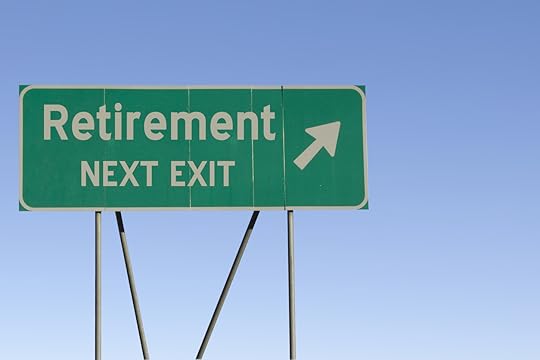
Who says you have to retire? Here are some folks who’ve proven that you don’t. Here are the hardest-working person in…
…the paperboy business
Honoree: Ted Ingram of Winterborne Monkton, England
Details: In 1942 Ingram, then 22, got a paper route to add to the income he made driving a tractor. He delivered the Dorset Echo for the next 72 years, more than 500,000 copies in all. And he delivered nearly all them on a bicycle, taking to his car only after hip replacement surgery. Knee troubles forced him to give up the route for good in 2013, at age 93. In all those years the world’s longest-serving paperboy took just two vacations, both in the 1960s, and one sick leave in 1950 after he broke his back.
…the stock market
Honoree: Irving Kahn of New York, New York
Details: Kahn began his Wall Street career as a 23-year-old “runner” (delivery boy) on the New York Stock Exchange in 1929. A few months later the stock market crashed, ushering in the Great Depression. Kahn survived (he made a handsome profit shorting stocks before the crash) and he rode out several more booms and busts over the years. A “value investor,” his strategy was to buy stocks he thought were underpriced, then hold onto them until their value increased, and sell them for a profit. In 1978 the 73-year-old founded Kahn Brothers Group with his sons Alan and Thomas; by 2014 the firm was managing nearly $1 billion in assets and Kahn, 108, was still coming in to work three days a week. He died in 2015, a month after turning 109, still picking stocks to the very end.
…medicine
Honoree: Dr. Leila Denmark of Athens, Georgia
Details: Denmark, a pediatrician, began a medical internship in Atlanta’s Grady Hospital in 1928. In 1931 she opened her own practice and the following year she helped to develop a vaccine for whooping cough, which was often fatal to children. When her husband passed away in 1990, Denmark considered retiring after 62 years in practice, but decided against it. She continued on for another 11 years, retiring at 103…but only because her eyes became too weak for her to perform certain medical exams. By then she was treating the great-grandchildren of her earliest patients. Denmark lived another 11 years. At the time of her death at age 114 in 2012, she was the fourth-oldest person in the world.
…The federal judiciary
Honoree: Judge Wesley Brown of the Federal District Court for Kansas
Details: Brown graduated from law school in 1933 and practiced law for three decades before President John F. Kennedy nominated him to the federal bench in 1962. The U.S. Constitution allows federal judges to remain on the bench for life, and Judge Brown did just that. He was still hearing cases when he died in 2012 at the age of 104.
…The air
Honoree: Ron Akana of Boulder, Colorado
Details: Akana was a 21-year-old student at the University of Hawaii in 1949 when he saw an ad in the paper for flight steward jobs on United Airlines. A job that offered access to the mainland was a big deal in those days, so Akana (and 400 others) applied for the eight openings…and he got one of them. He worked for United for the next 63 years, and saw a lot of changes in that time. Flights became nonsmoking; prop planes gave way to jets, which cut travel time to the mainland in half; stewards and stewardesses became “flight attendants.” If you’ve ever flown United from Denver to Kauai or Maui, you may have been served by Akana. When he retired in 2012 at age 83, it was estimated that he’d flown more than 20 million miles—the equivalent of 40 trips to the moon and back.
…an ice-cream truck
Honoree: Allan Ganz of Boston, Massachusetts
Details: Ganz started working on his father’s ice-cream truck in the late 1940s when he was 10. He kept at it until he was 19, spent two years in the military, and then he went back to working with his dad. He didn’t buy his own truck until 1977, when he was 40. But he’s had it ever since. As of 2016, the 79-year-old had logged 67 years driving up and down the Massachusetts North Shore selling ice cream out of his or his father’s trucks, the longest career as an ice-cream man ever. He may have a few years left in him, too: his father didn’t give up his truck until he was 86.
#mc_embed_signup{background:#fff; clear:left; font:14px Helvetica,Arial,sans-serif; }
/* Add your own MailChimp form style overrides in your site stylesheet or in this style block.
We recommend moving this block and the preceding CSS link to the HEAD of your HTML file. */
Subscribe to our mailing list and download a sampler of our 30th annual edition, Uncle John’s Old Faithful Bathroom Reader. Check your email for download link.
* indicates required
Email Address *
Country
United States of AmericaCanadaOther
[image error]
The post Some People Never Retire appeared first on Trivia Books and Facts | Uncle John's Bathroom Reader.
Rockin’ Out With Manuel Noriega
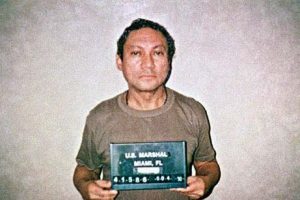
The ousted leader of Panama died last week at the age of 83. Here’s the bizarre story about the unique tactic U.S. military forces used to ensure his surrender.
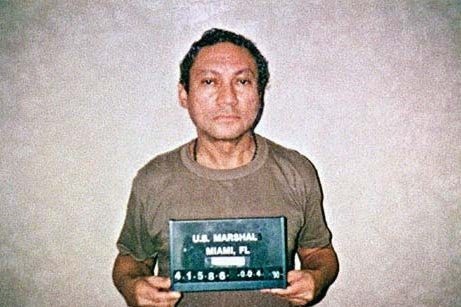
After serving most of the last three decades incarcerated in Florida, France, and his home nation of Panama, as well as under house arrest, Manuel Noriega died in a hospital at age 83 after complications from a brain tumor removal surgery. At one time, the former president of Panama was a valuable ally of the C.I.A., providing intelligence and helping move weapons and supplies to U.S.-backed insurgencies active in Central and South America. But he was also involved in international drug trafficking, which he did to fund a lavish lifestyle. In 1988, the U.S. government indicted him on trafficking charges; the following year, the American military invaded Panama to remove Noriega from power, and then try him for many crimes.
“Operation Just Cause” hit Panama in late December 1989, a few days before Christmas. Noriega sought sanctuary in Panama City’s Papal Nunciatura—essentially the Vatican’s embassy in the tiny, predominantly Catholic country. American troops gathered outside the embassy and waited while General Maxwell Thurman negotiated Noriega’s release with Monsignor Joe Sebastian Laboa at the embassy’s gates.
Thurman was concerned that reporters and other stealth observers might be able to use high-powered microphones to eavesdrop on his conversations with Laboa, so he ordered a wall of sound he built around the Nunciatura. By Christmas, the building was surrounded with Humvees outfitted with huge speakers. And they were all turned hooked up to Armed Forces Radio. Not only would the sound of music provide cover, but it would also serve to so annoy Noriega that he’d eventually get so fed up that he’d surrender.
At first, Christmas music was played, because it was Christmas. Then the offensive began. Noriega was a fan of classical musical styles, especially opera. Armed Forces radio countered by playing whatever troops stationed to the operation (or elsewhere in Panama, where the U.S. military had a presence) requested. Because this was 1989, and the troops were mostly young men, almost all those requests were for hard rock, heavy metal, and classic rock. Among the tunes that bombarded Noriega: Billy Idol’s “Flesh for Fantasy,” Guns N’ Roses’ “Welcome to the Jungle,” Twisted Sister’s “We’re Not Gonna Take It,” Boston’s “Don’t Look Back,” Judas Priest’s “(You’ve Got) Another Thing Coming,” Alice Cooper’s “No More Mister Nice Guy,” and, most appropriately, Van Halen’s “Panama.”
Eventually for Noriega, enough was enough. He surrendered on January 3, after a little over a week of non-stop rock. He was sentenced to a 40-year term (later reduced to 30 years).
The post Rockin’ Out With Manuel Noriega appeared first on Trivia Books and Facts | Uncle John's Bathroom Reader.
June 6, 2017
What Some NBA Teams Were Almost Called

Right now, the NBA Finals could’ve be a battle between the Golden State Warriors and the Cleveland Presidents. Really!

Go Presidents!
“Cavaliers,” referring to the royal loyalists during the English Civil War, won a name-the-team poll in 1970 in the Cleveland Plain-Dealer. Ironically, the pro-crown name beat out a pro-democratic name. One of the other options was Presidents, referring to how seven American presidents had been born Ohio.
Go Swamp Dragons!
The Brooklyn Nets used to be the New Jersey Nets, and before that they were the New York Nets, when they joined the NBA after fleeing the defunct ABA in the ‘70s. The team was a perpetual bottom-of-the-standings occupant and so in 1994, Nets executives came up with a publicity stunt: to change the team’s name to the New Jersey Swamp Dragons. (They changed their minds.)
Go Unicorns!
The Boston Celtics are among the most storied teams in all of professional sports, including its years in which Bill Russell lead the team to 11 championships in the ‘50s and ‘60s, to the Larry Bird years of dominance in the ‘80s, to its current title contention status. It’s hard to imagine the Celtics commanding as much respect if the team had gone with one of its other name ideas: the Unicorns.
Go Mounties!
The Memphis Grizzlies began life in 1995 as the Vancouver Grizzlies. That nickname was the result of a quick fan poll, edging out Ravens. The poll had to be done in the first place because the original team name selected—the Mounties—was nixed by the actual Royal Mounted Canadian Police.
Go Express!
The Grizzlies moved to Memphis in 2001 and kept the name…mainly because the NBA objected to an offer by Memphis-based Federal Express that would’ve given the team $100 million to rebrand as the Memphis Express.
Go Cajuns!
The New Orleans Jazz moved to Utah in 1979, and took with it its geographic-specific name. Nevertheless, it could’ve been even more New Orleans-oriented: the team was almost named the New Orleans Cajuns.
Go White Wing Doves!
Before they were the Phoenix Suns, the team invited locals to send in team name ideas. More than 28,000 entries came in, including Scorpions, Thunderbirds, Rattlers, Dudes, Cactus Giants, Poobahs…and White Wing Doves. (Owner Jerry Colangelo ultimately got to pick, and he chose the simple “Suns.”)
The post What Some NBA Teams Were Almost Called appeared first on Trivia Books and Facts | Uncle John's Bathroom Reader.
May 30, 2017
Quiz & Giveaway! 30 Years – 30 Questions – 30 Books

In honor of Bathroom Reading Month—as well as the upcoming release of our 30th anniversary edition, Uncle John’s Old Faithful Bathroom Reader—we’re hosting a trivia contest. All the questions are about 1987, the year Uncle John’s Bathroom Reader first gave bathroom reading the love and attention it deserved. The prize: a collection of 30 Uncle John’s Bathroom Readers. So dig into your memory banks, travel back to 1987, and see how you do! Once you finish the quiz, enter your email address for a chance to win!
#fca_qc_quiz_34783 button.fca_qc_button {
background-color: #58afa2;
box-shadow: 0 2px 0 0 #3c7d73;
}
#fca_qc_quiz_34783 button.fca_qc_button:hover {
background-color: #3c7d73;
}
#fca_qc_quiz_34783 div.fca_qc_answer_div.fakehover,
#fca_qc_quiz_34783 div.fca_qc_answer_div:active {
background-color: #8dc8bf;
}
Test Your 1987 Knowledge

Start Quiz
Question
[image error][image error][image error][image error][image error][image error]
Your answer:
Correct answer:
NextYou got {{SCORE_CORRECT}} out of {{SCORE_TOTAL}}
[image error]Your Answers
The post Quiz & Giveaway! 30 Years – 30 Questions – 30 Books appeared first on Trivia Books and Facts | Uncle John's Bathroom Reader.
May 29, 2017
Ask Uncle John Anything: Parroting an Answer

Uncle John knows pretty much everything—and if he doesn’t, he heads his massive research library, or puts one of his many associates on the case. So go ahead: In the comments below, ask Uncle John anything. (And if we answer your question sometime, we’ll send you a free book!)

Why are parrots stereotypically named Polly?
Parrots probably get pretty tired of humans walking up to them and trying to get them to talk by asking, “Polly want a cracker?” Not only does it get their hopes up if you don’t have the cracker that was being offered, but it’s kind of silly to assume that the parrot is going to be named Polly. It’s just one of those things that’s in the collective mindset—Polly is a generic, go-to parrot name, the way Fido or Spot is for a dog.
Like many phrases and sayings, the notion of parrots named Polly comes from popular culture—albeit that of 17th century England. Ben Johnson was one of the most popular playwrights of his day, right up there with Christopher Marlowe and William Shakespeare. One of his most famous plays was a hit comedy first produced in 1606 called Volpone. Two of the play’s sillier characters are Sir Politic Would-Be, and his wife, Lady Politic Would-Be. They shamelessly try to make their way into the social scene of Venice…despite being not very smart. Mr. and Mrs. Politic Would-Be tend to repeat back smart-sounding phrases they hear, despite having no idea that they mean. That earns Sir and Lady Pol, for short, a comparison to parrots.
Within ten years, print references to actual parrots named Pol were popping up in books and magazines. But since this is pets we’re talking about, people were more inclined to use the more affectionate, diminutive form of Pol—which is Polly.
The post appeared first on Trivia Books and Facts | Uncle John's Bathroom Reader.
May 26, 2017
Today is Memorial Day
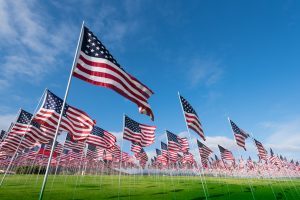
Here’s a little history about this day of remembrance and reflection.
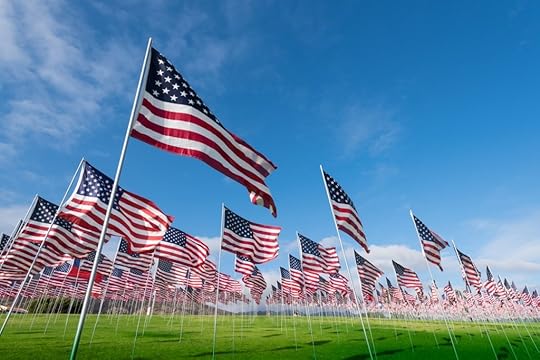
History
Memorial Day grew out of commemorations of the Civil War. Graves of those lost in the War Between the States were decorated with flowers and flags as early as 1861 in Virginia, caught on in Georgia in 1862, and in Pennsylvania in 1863, shortly after the dedication of the military cemetery in Gettysburg.
Birthplace
However, legend says that the idea of setting aside a day to remember those who died in the war originated in Waterloo, New York, in 1866. It’s not true, but that was cited in the official proclamation signed by President Lyndon Johnson in 1966 recognizing the town as the birthplace of the holiday 100 years prior.
Decoration Day
For decades after the Civil War, Memorial Day was “Decoration Day,” and it started in the former Confederate states. In the South, different major cemeteries where large numbers of Confederate soldiers were buried observed their own various, individual Decoration Days.
May 30
In 1868, the Union Army veteran organization called the Grand Army of the Republic created the holiday as a day to continue the tradition of placing flowers on the graves of those who died fighting for the North in the Civil War. The organization’s leader, John A. Logan called for a national, annual observance of Decoration Day on May 30. That date was picked because it wasn’t the anniversary of any particular Civil War battle, making it a neutral date for the North and the South.
On the first Decoration Day of May 30, 1868, events were held at more than 180. Just two years later, memorial observances commenced at more than 330.
Name Change
By 1882, some states and organizations were using the more specific and inclusive term “Memorial Day” instead of “Decoration Day,” but the new name wasn’t common until after World War II. The name was officially changed to Memorial Day by the federal government in 1967.
Three-Day Weekend
Memorial Day was always celebrated on May 30, regardless of the day of the week it fell on, until 1968, when Congress passed the Uniform Monday Holiday Act. It moved some holidays from specific dates to nearby Mondays to create three-day weekends. Along with Washington’s Birthday moving from February 22 to the third Monday in February and Columbus Day from October 12 to the second Monday in October, Memorial Day became a permanent fixture on the last Monday in May. (The late Hawaiian senator and World War II veteran Daniel Inouye routinely introduced legislation to move Memorial Day back to May 30, but he was never successful.)
National Moment of Remembrance
As of 2000, there’s a National Moment of Remembrance. On Memorial Day at 3:00 p.m., Americans are encouraged to stop, be quiet, and think about the sacrifice of veterans.
Memorial Day vs. Veterans Day
What’s the difference between Memorial Day in May and Veterans Day in November? Memorial Day honors those who died during military service. Veterans Day recognizes the service of all U.S. servicemen and women, living and deceased.
The post Today is Memorial Day appeared first on Trivia Books and Facts | Uncle John's Bathroom Reader.
Welcome to Twin Peaks
Twin Peaks was a cultural phenomenon during its very brief run from 1991 to 1992. And now, the series has been revived by creator David Lynch. Here’s a look back at how Twin Peaks was one of the weirdest and greatest shows in TV history.
[image error]
After a movie about Marilyn Monroe fell apart—they insisted on depicting as fact the conspiracy theory that Monroe was murdered by the Kennedys—director David Lynch and screenwriter Mark Frost started working on an oddball mystery show called North Dakota, set in the plains of the state because they wanted the show’s setting to be isolated. They decided that forests were more dark and mysterious than trees, however, and switched the setting to Washington. The mysteries surrounding Monroe’s death were adapted into the show’s central storyline about the bizarre murder of Laura Palmer.
In the opening credits, there’s a sign that says Twin Peaks has a population of 51,201. That’s because Lynch and Frost were overruled—they wanted the sign to say 5,120. But ABC executives thought nobody would watch a show set in a small town. Lynch got his revenge. In the tie-in book Twin Peaks: Access Guide to the Town, Lynch wrote that the sign was wrong, and that the town’s real population is 5,120.1.
One of the weirdest characters on this very weird show was the Log Lady, played by Catherine Coulson. David Lynch came up with the character in the ‘70s. Coulson acted in his movie Eraserhead. Lynch told her he always liked wood because his father had been a botanist for the U.S. Forest Service. Seeing Coulson while thinking about wood put into his head the idea for a TV series called I’ll Test My Log with Every Branch of Knowledge. She’d talk to experts about their field, and the log would “learn.” (Sadly, that show never came to fruition.)
Twin Peaks was produced by Aaron Spelling Productions. During the height of the show’s “who killed Laura Palmer?” mystery, Aaron Spelling got a call from the company’s co-owner, financier Carl Lindner, wanting to know who the guilty party was. Spelling passed the question to company president Jules Haimovitz, who asked Lynch…who wouldn’t say. As it turns out, Lindner was calling on behalf of President George Bush, who was calling on behalf of his friend, Twin Peak superfan Mikael Gorbachev, president of the Soviet Union.
David Lynch toyed around with never revealing the identity of the killer. He wanted that arc to fade away as the show focused on the town and its strange characters. ABC wanted the mystery solved at the end of season 1. Lynch went so far as to send the network a fake script that said whodunit…and then kept doing what he wanted into the next season, which had already begun production. But it backfired. Fans got frustrated and ratings dropped significantly in season 2. Frost and Lynch had gotten so tired of the network’s meddling on this show that they moved on to their next show, a surreal comedy set backstage at a 1950s TV station called On the Air. Twin Peaks, a top-20 hit in early 1990, was off the air by the summer of 1991.
The post Welcome to Twin Peaks appeared first on Trivia Books and Facts | Uncle John's Bathroom Reader.
May 25, 2017
Put These Random Facts About IKEA Together

Stop struggling with assembling that bookshelf and read some facts about the international DIY furniture chain that put you into that mess in the first place.
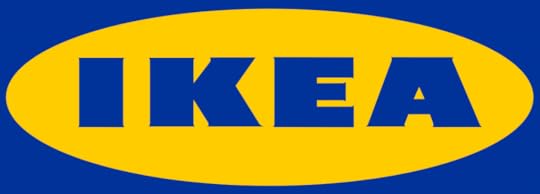
(1)
“IKEA” isn’t a Swedish word, or somebody’s name—it’s an acronym. Founder Ingvar Kamprad grew up on Elmtaryd, a farm in Agynnaryd, a town in Sweden. Take the first letters of Ingvar Kamprad and Elmtaryd Agynnaryd—I, K, E, and A, and you get IKEA. Most Americans pronounce that name “Eye-Kee-uh.” That’s actually wrong. It’s more properly pronounced “Ee-KAY-uh.”
(2)
What’s the most published book in the world? Well, the bestselling book of all time is the Bible. But the most distributed book each year is the IKEA catalog. More than 200 million copies of the company’s phone book-thick catalog—in more than two dozen different languages—are printed and distributed around the world every year.
(3)
IKEA spends enough money on printing those catalogs, so they cut corners on other printed materials, such as on their instruction manuals. Customers must put together most IKEA items themselves, and do so with the help of one or two pages of directions in the form of pictograms. Those pictures (usually) make the directions clear. Otherwise, if IKEA printed out written directions in dozens of languages, those manuals would be very thick and very costly to produce.
(4)
IKEA sold about $30 billion worth of furniture in 2015, the most recent year for which figures are available. And yet, the company is a non-profit organization. But it’s not a charity—just a shrewdly organized one. The furniture chain is a division of a holding company called Ingka, which is itself a division of Stichting Ingka Foundation, a tax-exempt organization. At the end of the day, IKEA pays a corporate tax rate of a little over 3 percent.
(5)
IKEA sells so much furniture that they use up 1 percent of the world’s annual wood production. And in processing that wood into furniture, the company’s main supplier generates 30 million pounds of sawdust each day.
(6)
Going to an IKEA store can be an all-day affair…so they’ve got a restaurant on the premises. Selling primarily Swedish meatballs and hot dogs, the IKEA cafes generate about $2 billion a year. That’s about how much business Arby’s does every year.
The post Put These Random Facts About IKEA Together appeared first on Trivia Books and Facts | Uncle John's Bathroom Reader.
May 24, 2017
The First Kids of Canada
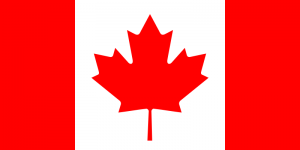
Canadian prime minister Justin Trudeau is the first “second generation” leader in the nation’s modern history—his father was Pierre Trudeau, PM of Canada from 1968 to 1979 and from 1980 to 1984. Here’s a look at what some of the other offspring of Canadian prime ministers did with their lives.
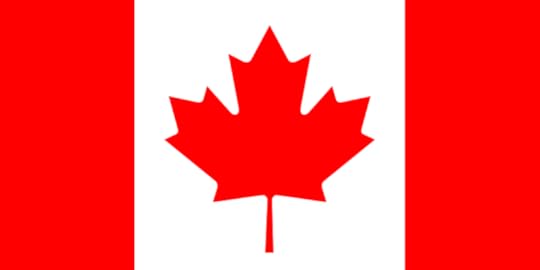
France Chretien
Jean Chrétien was prime minister of Canada from 1993 to 2003. He has three children, including one daughter, France Chrétien Desmarais. Along with her husband André Desmarais, president of the Power Corporation of Canada, she’s a major philanthropist and financial benefactor in Canada. The couple donated the money to build an entirely new building at the University of Ottawa, her alma mater. She also sits on various boards and foundations, including the Canadian Olympic Foundation.
Catherine Clark
Joe Clark was PM very briefly from 1979 to 1980, during the nine months between Pierre Trudeau’s tenures. He continued serving in Parliament and as the leader of the Progressive Conservative party, he was a candidate for PM again in 2000. One of his closest advisors was his daughter, Catherine Clark. After helping in a public advocacy campaign to encourage young people to vote, Clark shifted into a career in television, hosting political and public affairs talk shows such as Beyond Politics and Sunday Sound Off. (Which means Canada has a daughter of a former prime minister on TV each week discussing the policies of the prime minister who’s the son of another former prime minister.)
Ben Mulroney
Brian Mulroney was PM from 1984 to 1993. His son is Ben Mulroney, who has enjoyed a very active career in entertainment journalism, in print, on radio, and on Canadian television, where he’s covered awards shows and celebrity news. He’s probably most famous as the host of the nationally televised singing competition Canadian Idol.
Alexandre Trudeau
After finishing college in 1997, the younger brother of Justin Trudeau and son of Pierre Trudeau embarked on a career as a serious documentary filmmaker. His first film: Liberia, the Secret War. His experience covering war and conflict led to a position as an embedded journalist during the 2003 Iraq conflict. After that, he made The Fence, a film about how the Israeli-Palestinian conflict affects daily life for families.
The post The First Kids of Canada appeared first on Trivia Books and Facts | Uncle John's Bathroom Reader.



